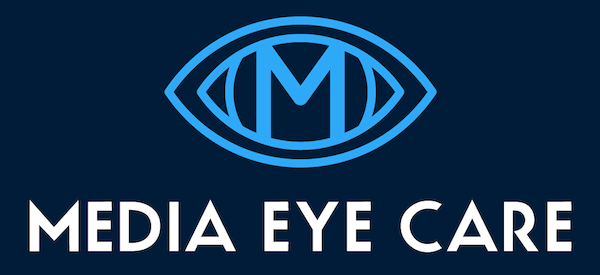Media Eye Care - Quality Eye Care in Media, Pennsylvania
Media Eye Care is dedicated to providing the most comprehensive eye exams to patients throughout Media. Our eye exams are designed to detect eye diseases, even at the earliest stages. We also have a large selection of contact lenses and frames for you to choose from, with styles, brands, and colors to suit every face and preference.
Elevate your eye care to the next level with Media Eye Care.
Why Choose Media Eye Care?

What Our Patients Are Saying
Eye Exams & Optometry Services in Media, Pennsylvania
At Media Eye Care we welcome patients of all ages to our comfortable optometry office. Our warm and trusted eye doctor provides personalized optical and medical eye care services to satisfy your family’s needs at any age, from pediatrics to geriatrics. Depending upon your age, lifestyle and overall health condition, vision care requirements change. In our friendly clinic, we become familiar with each individual patient in order to customize eye exams and treatment options.
Our family eye care services include eye exams for kids and adults, vision correction and management of age-related eye disease. Located conveniently to serve Media residents, we offer hours to suit every family’s schedule.

iProX
The highest performing IPL device on the market with proprietary technology for increased comfort and best-in-class patient results
The iProX is equipped to deliver a wide range of treatment applications to better serve the needs of your patient population, including effective permanent hair removal, acne reduction, targeted vascular therapy and reduction of inflammation, and more.

Featured Eye Care Services Offered By Our Optometrist
Myopia is a condition which causes difficulty focusing on objects at a distance while near vision remains normal. Myopia is one of the most common vision problems worldwide and it is on the rise.
It is not uncommon for patients to have difficulty wearing contact lenses for a number of reasons. A specialized fitting with an eye doctor who knows your condition will help you find the right match.
If your eyes often feel gritty, itchy, dry, or overly watery, you may be suffering from dry eye disease. We use the latest diagnostic tools and effective solutions—ike artificial tears, prescription medications, and more.
Ask Dr. Eric B. Zhou a Question
What is blue light and why is it dangerous?
Blue light is part of visible light and has a wavelength close to UV rays on the light spectrum. It is naturally produced by the sun, given off by fluorescent light bulbs, and emitted by LED screens on computer monitors, tablets, and smartphones. The eye’s natural filters do not block blue light and chronic exposure may increase your risk for age-related macular degeneration. Evidence also shows that blue light exposure can lead to sleep problems.














